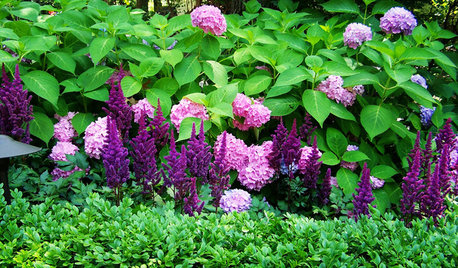NPK of compost
catlover_gardener
14 years ago
Featured Answer
Comments (74)
leira
14 years agolast modified: 9 years agoDan _Staley (5b Sunset 2B AHS 7)
14 years agolast modified: 9 years agoRelated Professionals
70037 Landscape Architects & Landscape Designers · Forest Acres Landscape Architects & Landscape Designers · Quincy Landscape Architects & Landscape Designers · Kerman Landscape Contractors · Raleigh Landscape Contractors · Vineyard Landscape Contractors · Wallingford Landscape Contractors · West Orange Landscape Contractors · Palos Heights Landscape Contractors · Adrian Decks, Patios & Outdoor Enclosures · King of Prussia Decks, Patios & Outdoor Enclosures · Overland Park Decks, Patios & Outdoor Enclosures · Racine Decks, Patios & Outdoor Enclosures · Reading Decks, Patios & Outdoor Enclosures · San Antonio Decks, Patios & Outdoor Enclosuresdchall_san_antonio
14 years agolast modified: 9 years agoDan _Staley (5b Sunset 2B AHS 7)
14 years agolast modified: 9 years agoswanz
14 years agolast modified: 9 years agoKimmsr
14 years agolast modified: 9 years agoDan _Staley (5b Sunset 2B AHS 7)
14 years agolast modified: 9 years agoswanz
14 years agolast modified: 9 years agocatlover_gardener
14 years agolast modified: 9 years agoswanz
14 years agolast modified: 9 years agoidaho_gardener
14 years agolast modified: 9 years agotoxcrusadr
14 years agolast modified: 9 years agoglib
14 years agolast modified: 9 years agoswanz
14 years agolast modified: 9 years agojoe.jr317
14 years agolast modified: 9 years agodchall_san_antonio
14 years agolast modified: 9 years agoavid_hiker
14 years agolast modified: 9 years agodchall_san_antonio
14 years agolast modified: 9 years agoDan _Staley (5b Sunset 2B AHS 7)
14 years agolast modified: 9 years agovalerie_ru
14 years agolast modified: 9 years agoDan _Staley (5b Sunset 2B AHS 7)
14 years agolast modified: 9 years agovalerie_ru
14 years agolast modified: 9 years agoDan _Staley (5b Sunset 2B AHS 7)
14 years agolast modified: 9 years agovalerie_ru
14 years agolast modified: 9 years agoDan _Staley (5b Sunset 2B AHS 7)
14 years agolast modified: 9 years agoDan _Staley (5b Sunset 2B AHS 7)
14 years agolast modified: 9 years agovalerie_ru
14 years agolast modified: 9 years agoDan _Staley (5b Sunset 2B AHS 7)
14 years agolast modified: 9 years agovalerie_ru
14 years agolast modified: 9 years agovalerie_ru
14 years agolast modified: 9 years agoDan _Staley (5b Sunset 2B AHS 7)
14 years agolast modified: 9 years agovalerie_ru
14 years agolast modified: 9 years agoDan _Staley (5b Sunset 2B AHS 7)
14 years agolast modified: 9 years agovalerie_ru
14 years agolast modified: 9 years agoidaho_gardener
14 years agolast modified: 9 years agoDan _Staley (5b Sunset 2B AHS 7)
14 years agolast modified: 9 years agodchall_san_antonio
14 years agolast modified: 9 years agoDan _Staley (5b Sunset 2B AHS 7)
14 years agolast modified: 9 years agovalerie_ru
14 years agolast modified: 9 years agoDan _Staley (5b Sunset 2B AHS 7)
14 years agolast modified: 9 years agobpgreen
14 years agolast modified: 9 years agoDan _Staley (5b Sunset 2B AHS 7)
14 years agolast modified: 9 years agovalerie_ru
14 years agolast modified: 9 years agocatlover_gardener
14 years agolast modified: 9 years agojolj
13 years agolast modified: 9 years agotapla (mid-Michigan, USDA z5b-6a)
13 years agolast modified: 9 years agongrrsn
11 years agolast modified: 9 years agoOil_Robb
11 years agolast modified: 9 years agoTheMasterGardener1
11 years agolast modified: 9 years ago
Related Stories

GARDENING GUIDESThe Poop Scoop: Enrich Your Soil With Good Old Manure
Get over the ick factor already — this natural super-ingredient for soil has so many benefits, you'll wonder why you ever went chemical
Full Story
GARDENING GUIDESSouthern California Gardener's September Checklist
Before prime planting time, clean out the old garden, prepare for the new, and dream up ideas for fall flowers and veggies
Full Story0

GARDENING GUIDESHow to Keep Your Citrus Trees Well Fed and Healthy
Ripe for some citrus fertilizer know-how? This mini guide will help your lemon, orange and grapefruit trees flourish
Full Story
GARDENING GUIDESGive Your Turf the Fall Tune-up It Deserves
Treat your battered lawn to a little TLC this fall, and it will reward you with lush, healthy grass come spring
Full Story
GARDENING GUIDESSoutheast Gardener's May Checklist
Bask in the blooms and mind your mulch this month; summer means lots to savor and lots to do in the garden
Full StoryMore Discussions







idaho_gardener